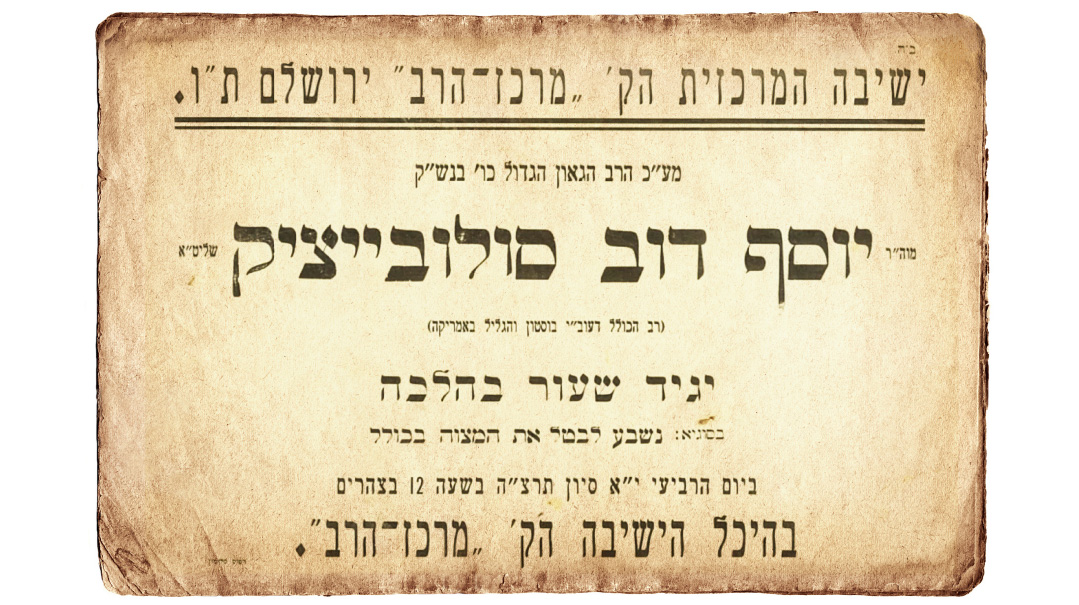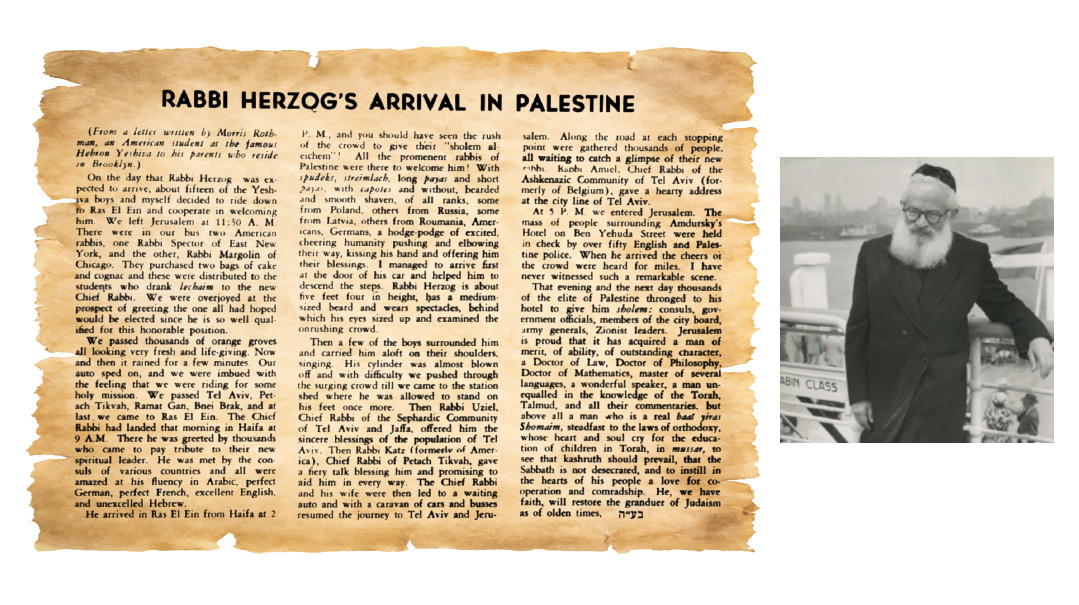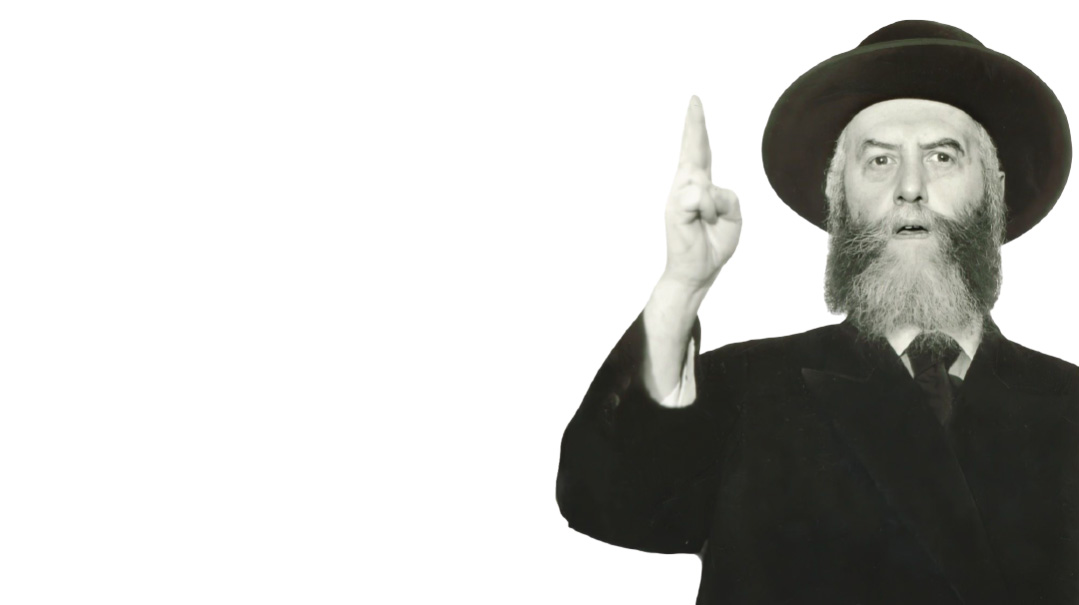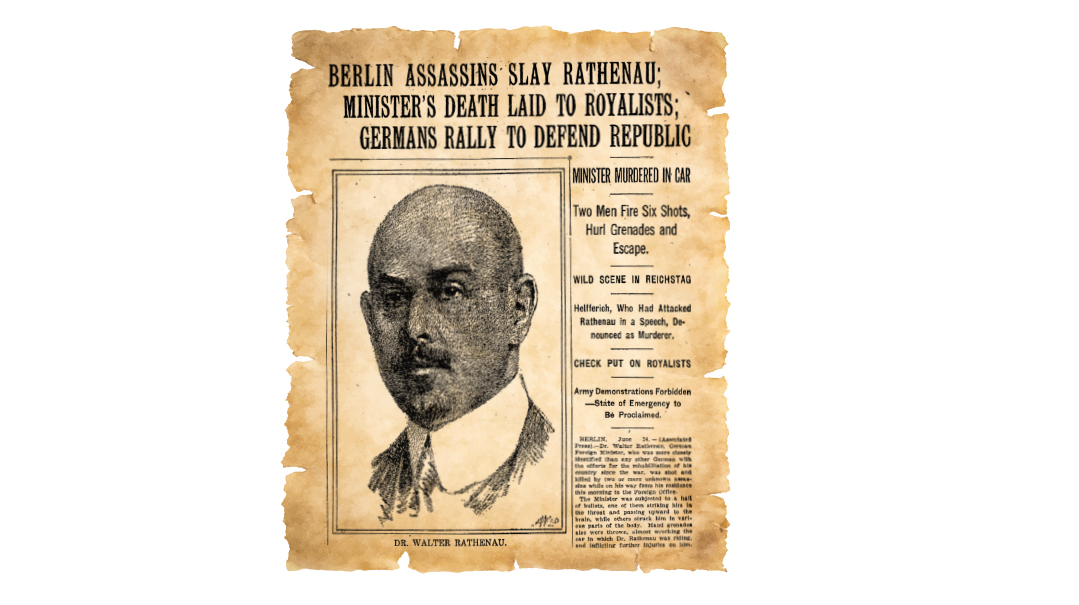Hail to the Rav
| August 2, 2022Rav Joseph B. Soloveitchik’s candidacy served as a catalyst for his only visit to the Holy Land

Title: Hail to the Rav
Location: Tel Aviv
Document: Broadside
Time: 1935
With the passing in 1935 of Rav Shlomo Ahronson, the first Ashkenazi chief rabbi of Tel Aviv, the first Hebrew-speaking city geared up for rabbinical elections. With the institution of the chief rabbinate still in its early stages, the religious establishment, the Zionist leadership, and of course the British colonial government looming in the background, all saw this is an important election that would impact the religious character of the burgeoning Yishuv as well as the city of Tel Aviv, which had a large religious population at the time.
The candidates for the position were Rav Moshe Avigdor Amiel, the rabbi of Antwerp and a student of both Rav Chaim Brisker and Rav Chaim Ozer; the rabbi of Dublin, Rav Yitzchak Isaac HaLevi Herzog; and a young rabbi from Boston and scion of one of the most prestigious rabbinical families in Eastern Europe, Rav Joseph B. Soloveitchik.
The latter’s candidacy served as a catalyst for his only visit to the Holy Land. Over the course of his visit, Rav Soloveitchik was invited to deliver a shiur at the Merkaz Harav Yeshivah in Yerushalayim, where it was recalled by then student Rav Moshe Zvi Neria: “I remember Rabbi Soloveitchik’s visit to the Holy Land in 1935, and his superb shiur on Maseches Nedarim at our yeshivah, Merkaz Harav — a shiur that captured the hearts of old and young alike.”
Rav Soloveitchik delivered a shiur at Machon Harry Fischel, as well as at a Melaveh Malkah for former residents of Brisk and alumni of the Volozhin yeshivah.
He also took the opportunity to pay his respects to Rav Kook, who was in the throes of his last illness. Rav Kook was reported to have said that “the experience of speaking with the young Rabbi Soloveitchik reminded him of his earliest years when he was a student” attending shiurim of Rav Chaim Brisker (Rabbi Soloveitchik’s grandfather) at the Volozhin yeshivah. He even advised his son Rav Tzvi Yehuda to attend shiurim of Rav Soloveitchik during his visit to Palestine in order to have a small taste of what the shiurim of Rav Chaim were like.
Alas, Rav Soloveitchik’s lack of affiliation with Mizrachi proved to be his undoing, as the powerful Mizrachi leaders Rav Yehuda Leib Fishman-Maimon and Rav Meir Bar-Ilan (Rav Soloveitchik’s great-great uncle!) threw their support behind Rav Amiel, who subsequently won the election and was installed as rabbi.
Shortly thereafter, Rav Kook passed away, eventually to be succeeded by Rav Herzog. Rav Soloveitchik, for his part, returned to Boston. Soon afterwards he was invited to apply for another position — chief rabbi of Ireland, which Rav Herzog had vacated upon succeeding Rav Kook. He decided to turn down that offer and stay in the US, where he’d make a decisive impact on the Jewish People both in Boston and in RIETS, upon filling his father Rav Moshe’s position with the latter’s passing in 1940.
Rabbi of the Widows
In the summer of 1959, Chief Rabbi Herzog passed away and the prestigious crown of chief rabbi of Israel was offered to Rav Soloveitchik by David Ben-Gurion. Older and wiser to the ways of the chief rabbinate in Israel, he politely declined. He clarified that his vision of rabbinical duties was exemplified by his grandfather Rav Chaim Brisker. Rav Chaim had described a rabbi’s role as one who was responsible to “stand up to affronts against the lonely and abandoned, safeguard the honor of the poor, and save the exploited from their oppressors.” Another job offer that Rav Soloveitchik politely declined was that of chief rabbi of the UK, a position for which his name was floated following the retirement of Rabbi Israel Brodie in 1965.
A Yishuv within the Yishuv
One of Rav Amiel’s crowning achievements was the founding of a yeshivah high school called Yishuv Hachadash in Tel Aviv. Some of those he brought in to teach there included Rav Elazar Shach, Rav Reuven Trop, Rav Yehoshua Yagel, Rav Tzvi Yehuda Meltzer, Rav Yehuda Kolodetzky, and Rav Dov Mayani, to just name a few of the luminaries. As early as the 1940s, many of the Yishuv’s top graduates went on to study in Bnei Brak at Ponevezh and Slabodka. Following the passing of Rav Amiel in 1946, the yeshivah was renamed Yeshivas Harav Amiel.
(Originally featured in Mishpacha, Issue 922)
Oops! We could not locate your form.






